I've been waiting on this day for a while. I started this blog series with no real intentions in my mind other than a playful way of promoting some friends and authors in a way I knew I could do - cooking - and to hone my own photography skills with a challenge. It's been a year (maybe a bit more) and there are still a few weeks left to go unless I decide to continue it. But today's post is special to me.
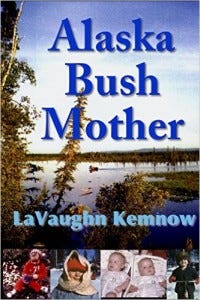
La Vaughn Vanderburg Kemnow is my grandmother, and she played a large part in shaping me, both directly and indirectly into the woman I am today. She has been a published author for some time, but my great-gradfather's book which she had cowritten went out of print, and I waited. She surprised me when she asked me to help out with her own book - the story of her early marriage, the homestead in Alaska, and the childhood of my own mother, uncles, and aunts.
I highly recommend Alaska Bush Mother, not just because it's about my family (wouldn't that be boring? but this isn't) but because it is a tale of heroism under conditions that would try the strongest man's soul, and it never once claims that. It is simply a woman who did what she needed to do to raise her children. I'd had no idea - and I learned that some of her family and friends didn't, either. My grandmother quietly explained recently that she didn't talk about it because she didn't want to complain.
Homesteading in Alaska meant making sure you put up food when you got it. One of the pictures from the book is of my grandmother putting up moose meat. An entire picnic-table is covered with it, while in the background tin washtubs were being heated to can the meat. Who shot the moose? Well, that would be Grandma, who wasn't of course a grandmother then, and this photo always makes me smile! I'd grown up hearing stories about the Jersey heifer that was painted during hunting season, imagine my delight when I saw there was a picture!
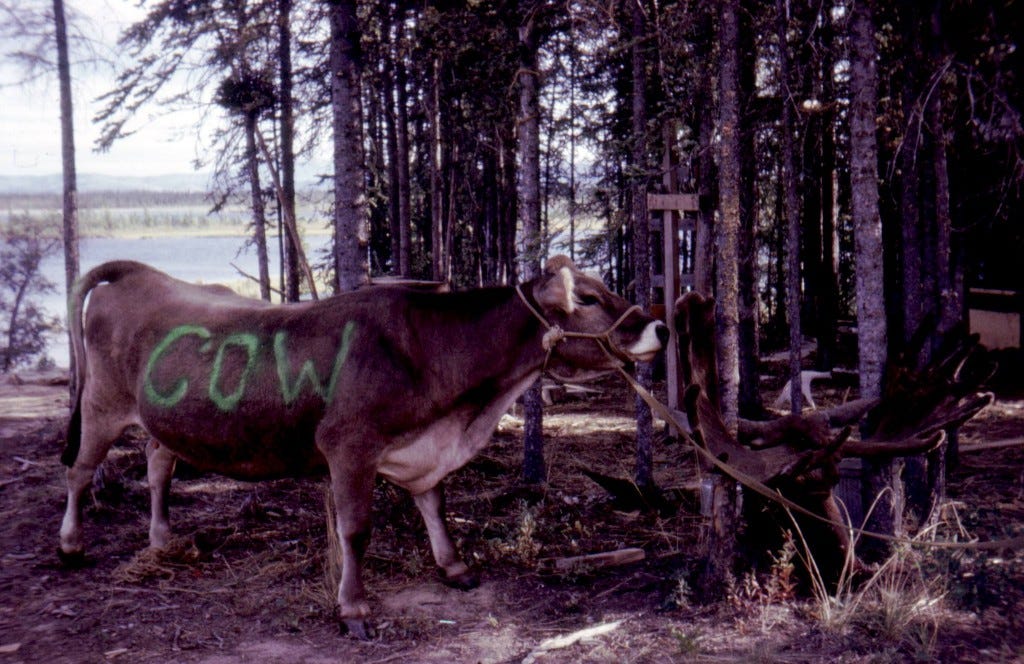
"Buttercup is sniffing at my moose antlers. She is labeled with green fluorescent paint because someone shot another homesteader's mule, thinking it was a moose."
When I was talking to Grandma about doing this blog, her first thought was that Moose Stew would be a good recipe to encapsulate her Alaskan experience. "I know you can't get Moose," she told me, "but beef will work just as well." I couldn't get bison, either, which was my second thought. When I went looking for it my options were ground, which isn't right, and steak which was too rich for my budget. And ridiculous to use in stew. And really, the tough cut of beef simmered into tenderness does capture more of the spirit of this recipe. Although I should point out that Buttercup wasn't for eating, she was a milk cow!
Rather than writing out a list of ingredients, I'm doing a pictorial of the technique with comments. Grandma pointed out you could put whatever you wanted - or what you had on hand - into this. She doesn't use mushrooms because Grandpa Ron won't touch them (which amuses me, since I picked wild mushrooms commercially with him when I was a girl) but the First Reader loves them, so in they went.
Moose (or What-Have-You) Stew
Begin by cubing your meat. Moose, caribou, elk, deer... I ate all of those in my Grandma and Great-grandmother's kitchens as a girl. But here in suburban Ohio, I settled for a beef roast that I chunked up.
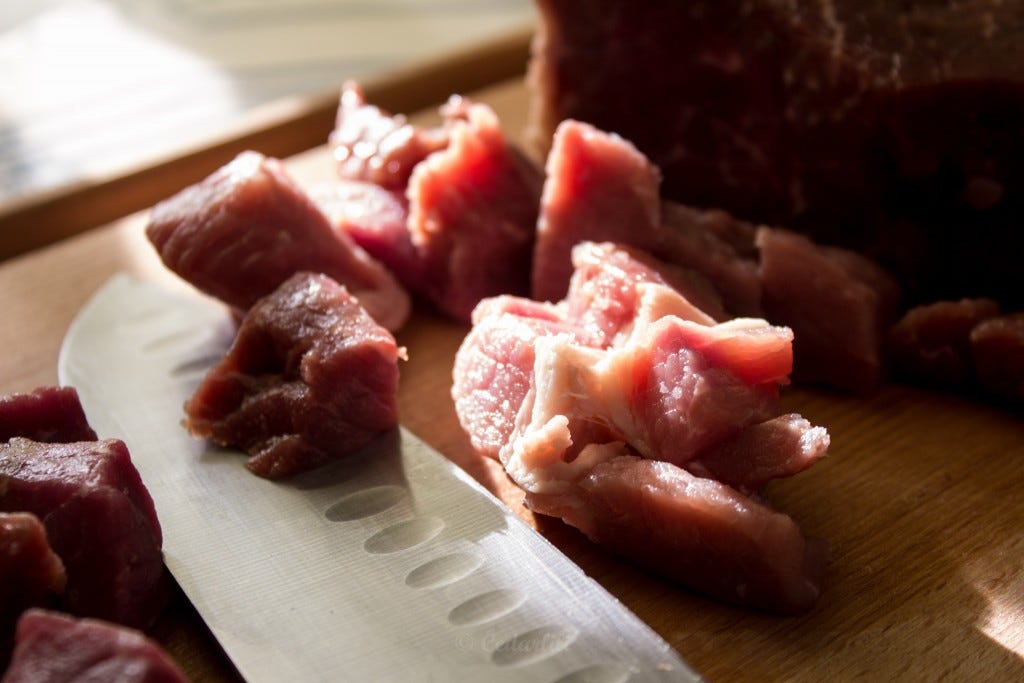
Heat your heavy pan (I'm using a very large flat-bottomed Dutch Oven on my stove) with a big dollop of bacon grease in it. Brown the meat.
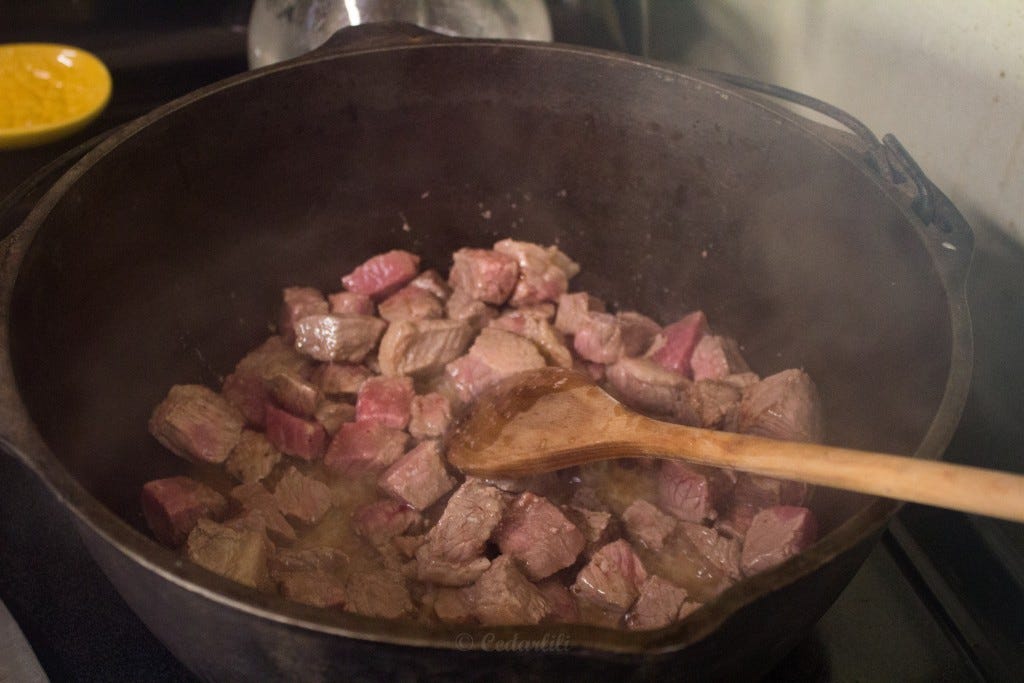
Once the meat is mostly browned, add in a handful of flour and fry with the meat. I added chopped onions and garlic at this point, too.
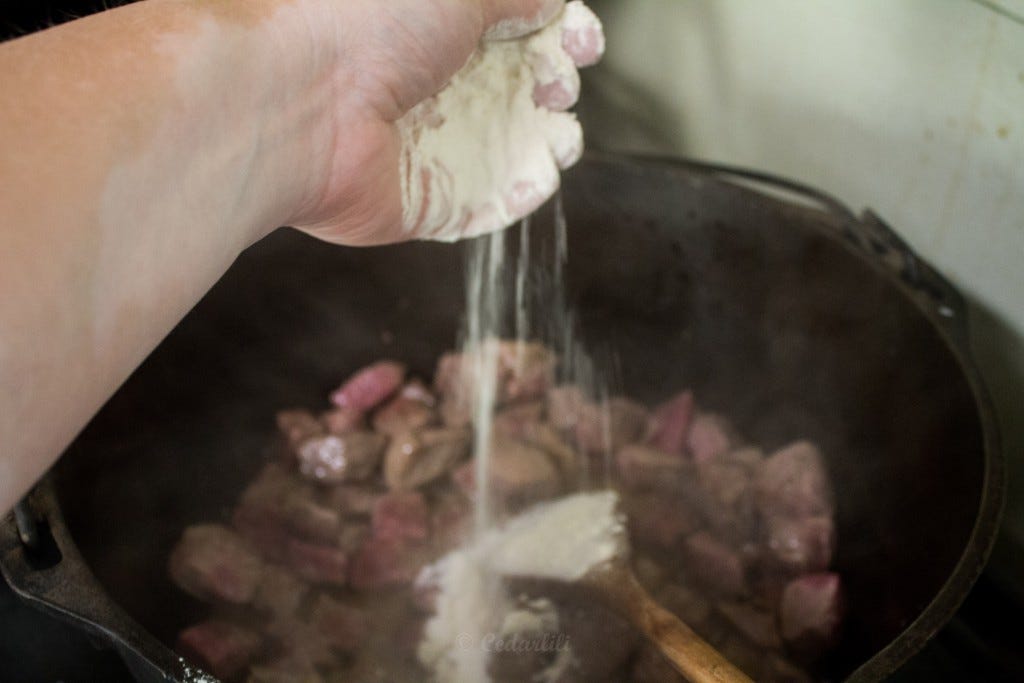
Add about a quart of water. More if you are making a family-sized pot of stew. You could use stock here, but I know Grandma wouldn't have had that on the homestead most of the time.
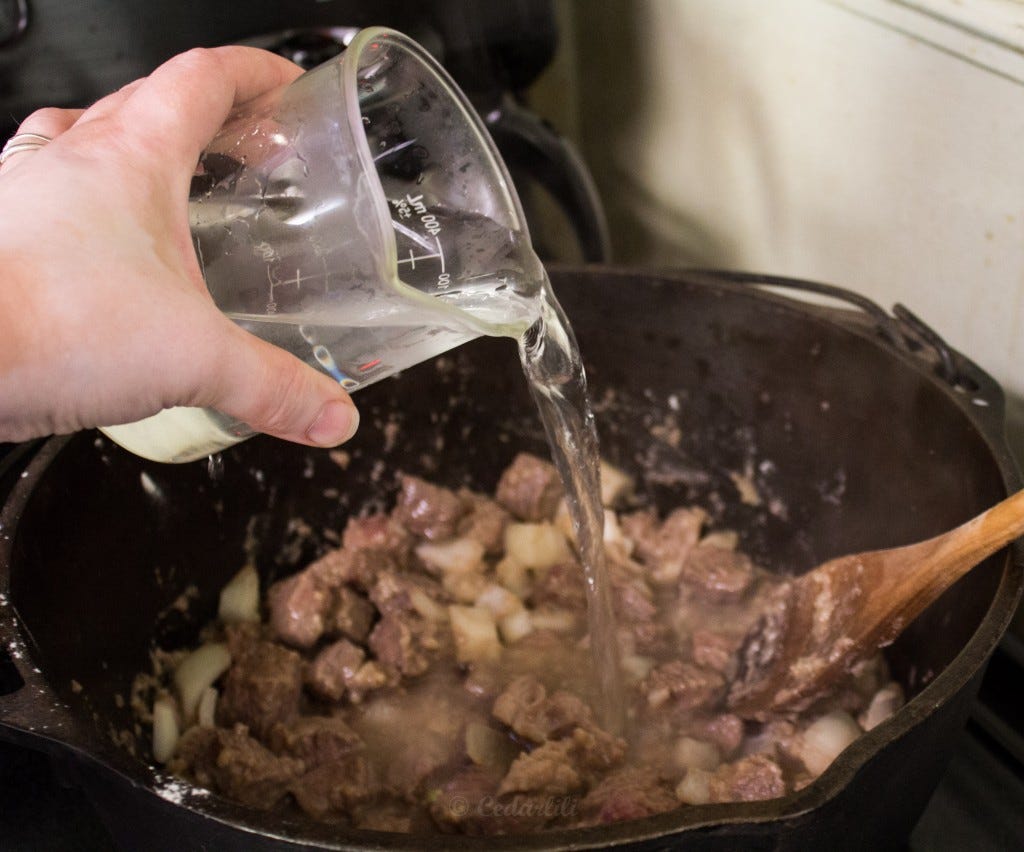
Cook, simmering, until the gravy has formed and the meat is cooked through. I put the mushrooms in during this stage.
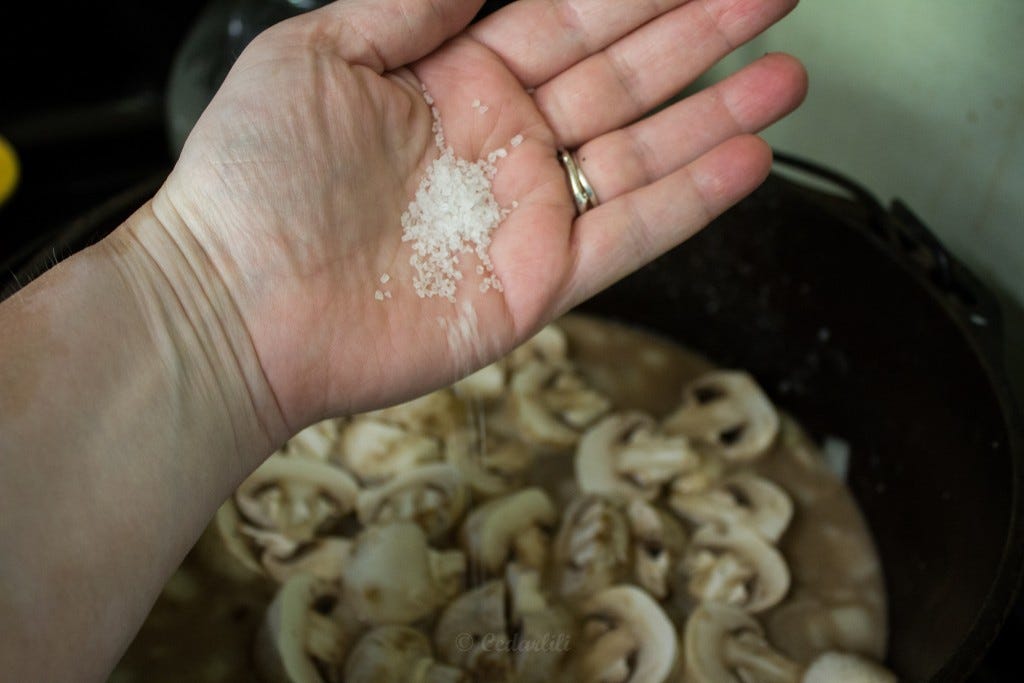
Season with salt, pepper, and a couple of Bay Leaves.
Right here, it's a thing of beauty! This is after simmering uncovered on the stovetop for about an hour and a half.
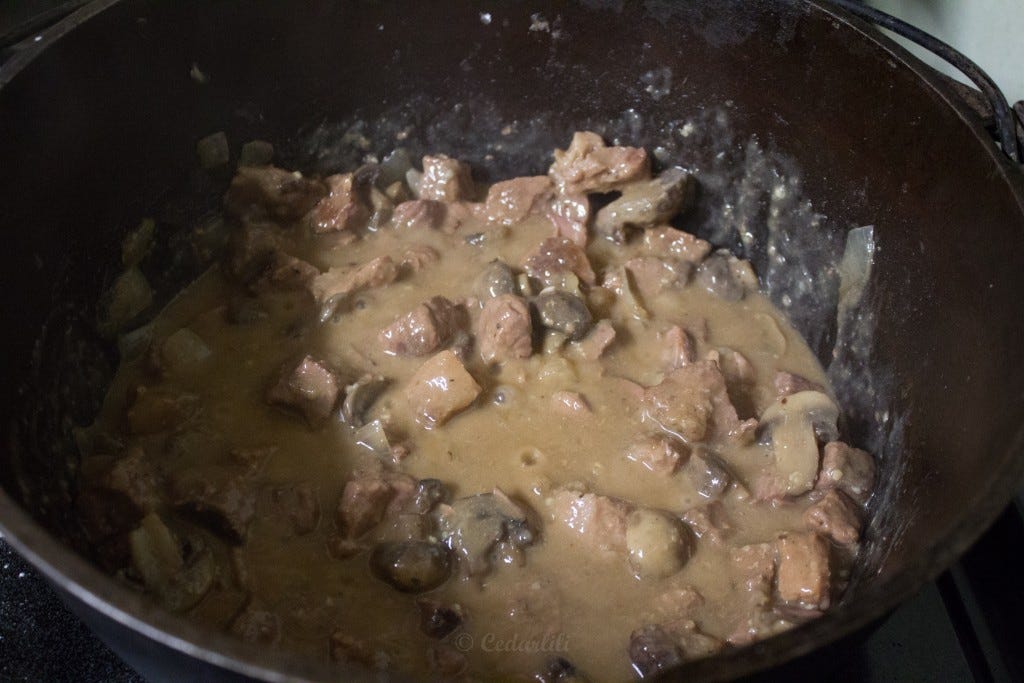
Add in potatoes and carrots, cover, and cook another hour. Stir occasionally, mine was wanting to stick on the bottom as the gravy was so thick. I did wind up adding a bit of water.
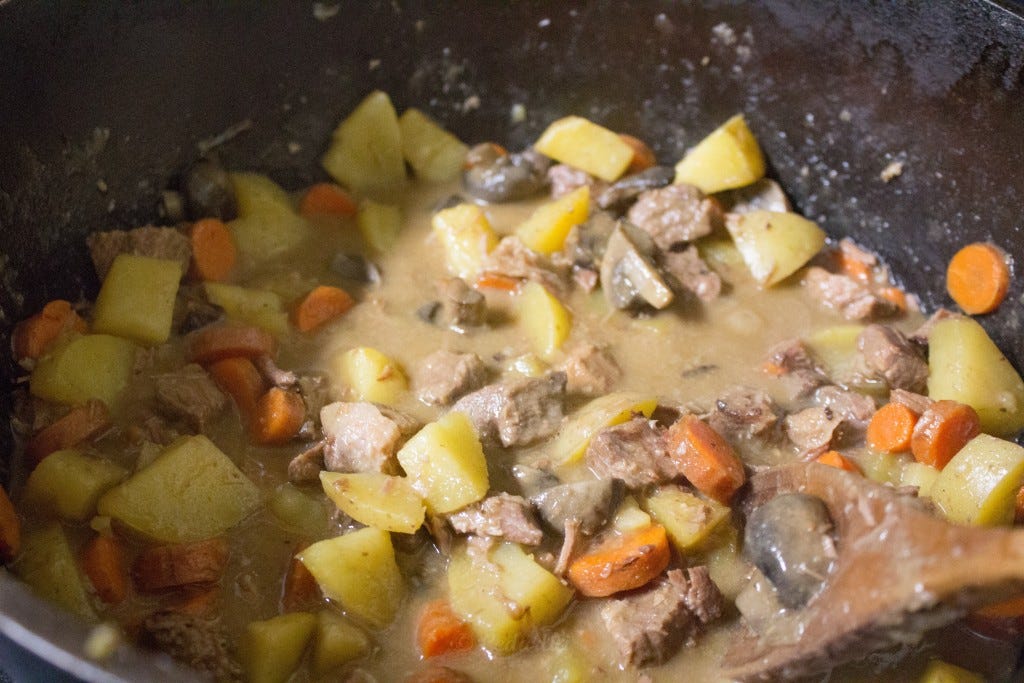
Taste, adjust seasonings if needed, and serve! I was debating bread (the First Reader wanted cornbread if I did bake) but these were hearty and satisfying all by themselves. We have just enough left over to have for lunch today. Yum...
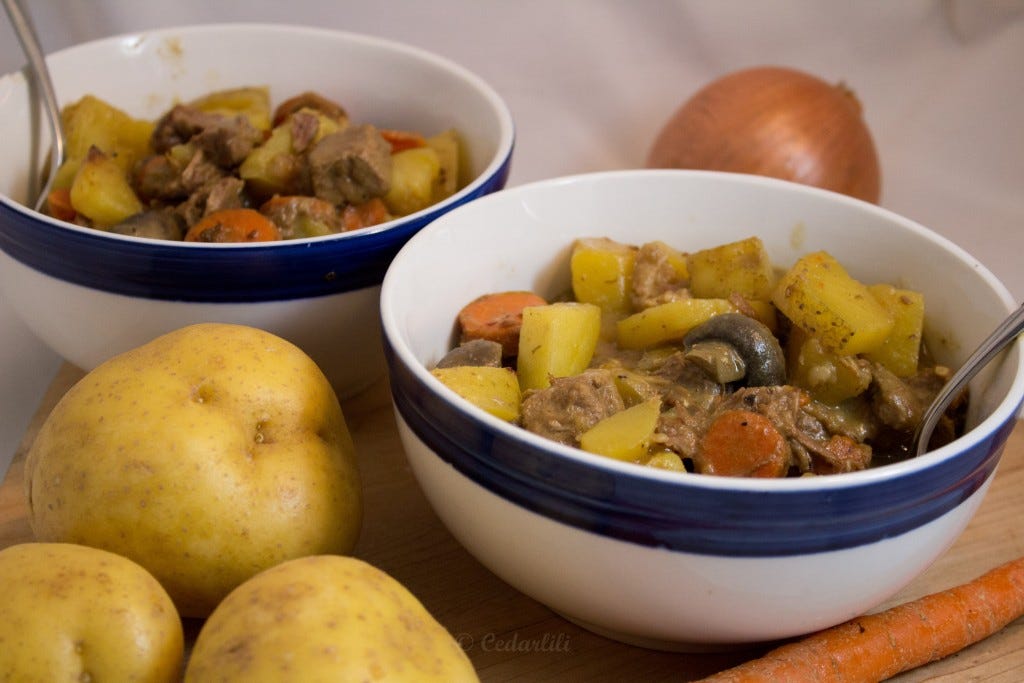
The First Reader informed me that this is the best Moose Stew I have ever made for him. When I laughed and pointed out he's never actually eaten my Moose Stew (and yes, I have made it) he told me this is also the best beef stew I've made for him. The stage of cooking into the gravy without adding the vegetables does really develop the rich meaty taste of this stew. And you could thicken it with arrowroot or cornstarch for the gluten-free, Grandma pointed out.
The Index Page for ETWYRT is here. The facebook group that exists to talk about this series, and many other food and book related topics can be found here.





I'm trying to figure out why Buittercup seems longer than is natural. Also drooling at the thought of using the bella mushrooms in my fridge in a stew. Nobody around here but me likes mushrooms...